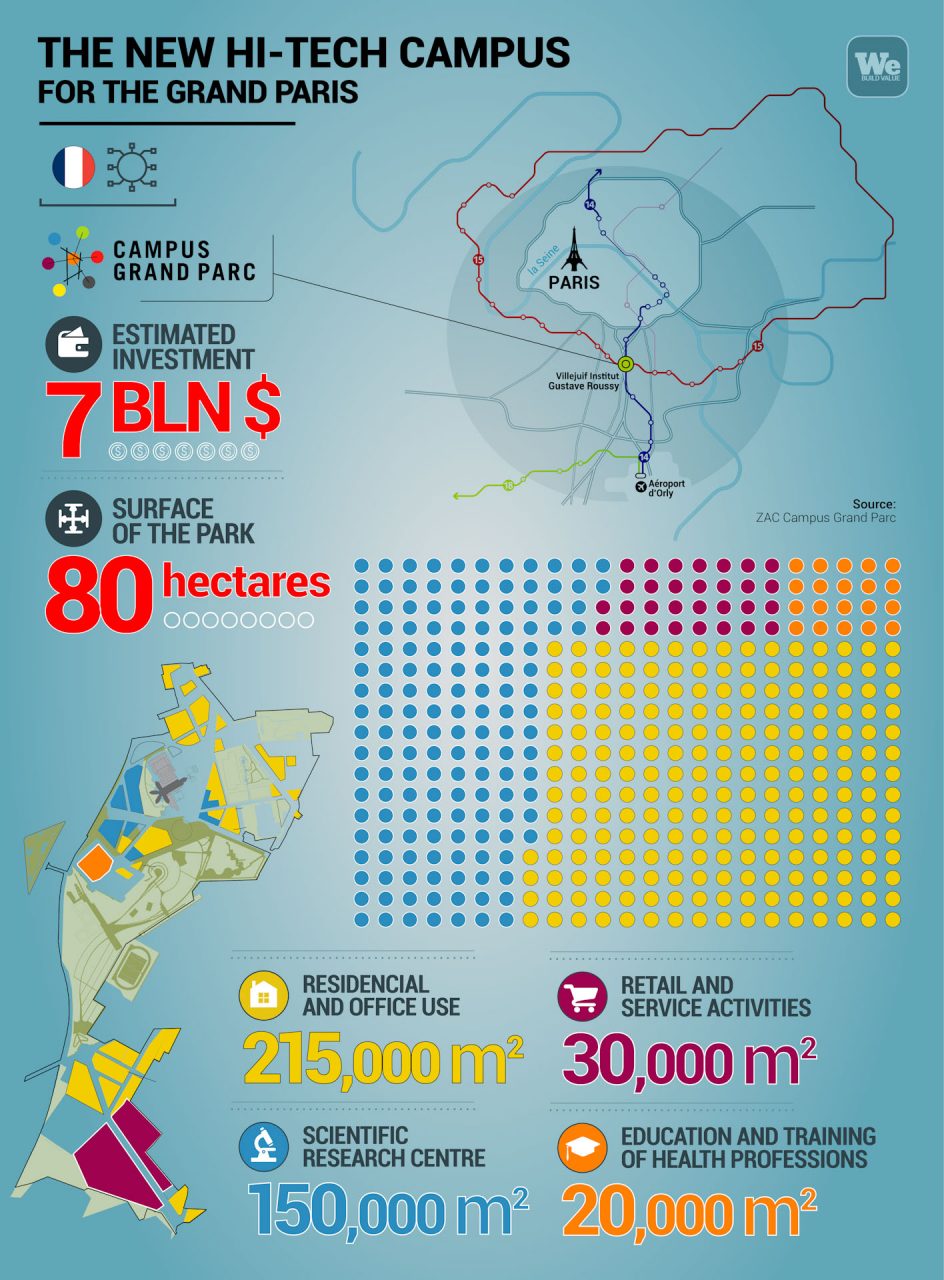A massive park sprawling across 80 hectares (0.3 square miles). A resource for the entire region of Ile-de-France, capable of attracting companies, training talents, and creating new sustainable urban settlements. An international destination built around the strategic intersection of one of Europe’s largest sustainable mobility corridors: the Grand Paris Express, the new subway serving Greater Paris.
The ZAC Campus Grand Parc, an urban development project worth $7 billion, is all of this. But above all, it demonstrates how the synergies between strategic infrastructure projects for sustainable mobility and urban development plans can go hand in hand to create innovative projects that re-design large urban areas along the lines of smart cities.
This is the plan for Paris, where key stations of the Grand Paris Express will be hubs for the new science park, efficiently connected with the city, but also independent thanks to a project that provides for the construction of sustainable housing, the creation of common areas and spaces to be allocated to universities, research centers, technology clusters.
A new campus outside Paris
The ZAC Campus Grand Parc is designed to create an urban campus that can attract international companies, centred on research and innovation, especially in the field of health. Hospitals, research centers, and university poles will be the primary candidates to “anchor” the huge spaces provided by the project.
To date, construction started in 2021, and the project is scheduled to be completed by the end of 2027. Inside the park there will be a scientific research centre measuring 150,000 square metres (1.6 million square feet); a centre for education and training of health professions (20,000 square metres, or 215,000 square feet), with 215,000 square metres (2.3 million square feet) allocated for residential and office use. Lastly, 30,000 square metres (322,000 square feet) is planned for retail and service activities.
The goal is to create a true citadel of science, where the activities of companies and training centers can coexist with the daily needs of residents living in this new “corner” of Paris.
The project aims to support the integration between the academic and entrepreneurial worlds, but also meet the need for new living spaces for the city. It has been planned as a multifunctional urbanisation, where private homes coexist with economic activities, but above all that simultaneously benefits from both autonomy and integration with the rest of the metropolis thanks the Grand Paris Express.
The gargantuan subway that connects the Park to Paris
To better understand the scope of this project, all you need to do is look at a photo of the Villejuif-Institut Gustave Roussy station. This is a strategic station on the route of the Grand Paris Express (where Webuild Group is among the construction firms involved) because lines 14 and 15 of the network intersect here, right at the foot of the Gustave Roussy Institute. Basically, from this station, which will be located a stone’s throw from the new Park, it will be possible to reach the center of the capital, as well as Orly airport.
In addition to Villejuif station, there will be another station on Grand Paris Express line 14 reachable on foot from the Park in a few minutes. To make the transport network even more efficient and integrated, the city administration has also planned for a series of new bus lines that will allow residents to move easily within the site, and at the same time to quickly access the subway stations.
The green and sustainable park for the Paris of the future
Access to an efficient and widespread sustainable transport system is at the heart of this project, which has twin goals: on the one hand, to create a modern and innovative new city center, on the other hand, to ensure that this ambitious real estate development does not become a “cathedral in the desert” but is connected to the rest of Paris.
That’s why the Park has been designed as an eco-district, or a sustainable hub that meets the most modern technical criteria, both in construction and in subsequent management, from the development of transport to the use of low-consumption building materials, from the use of geothermal energy for the production of electricity to the creation of a green system for the management of water resources as well as wastewater. Last but not least, the Park will be planted with 800 new trees and have over 2 hectares of public parks.
In terms of energy, a geothermal network will ensure the supply of heat and hot water to all buildings in the district, taking geothermal water at great depth, in order to extract heat and return it to its original layer.
These are just a few of the innovations of the ZAC Campus Grand Parc, one of the wonders of the new Paris made possible by the Grand Paris Express.


